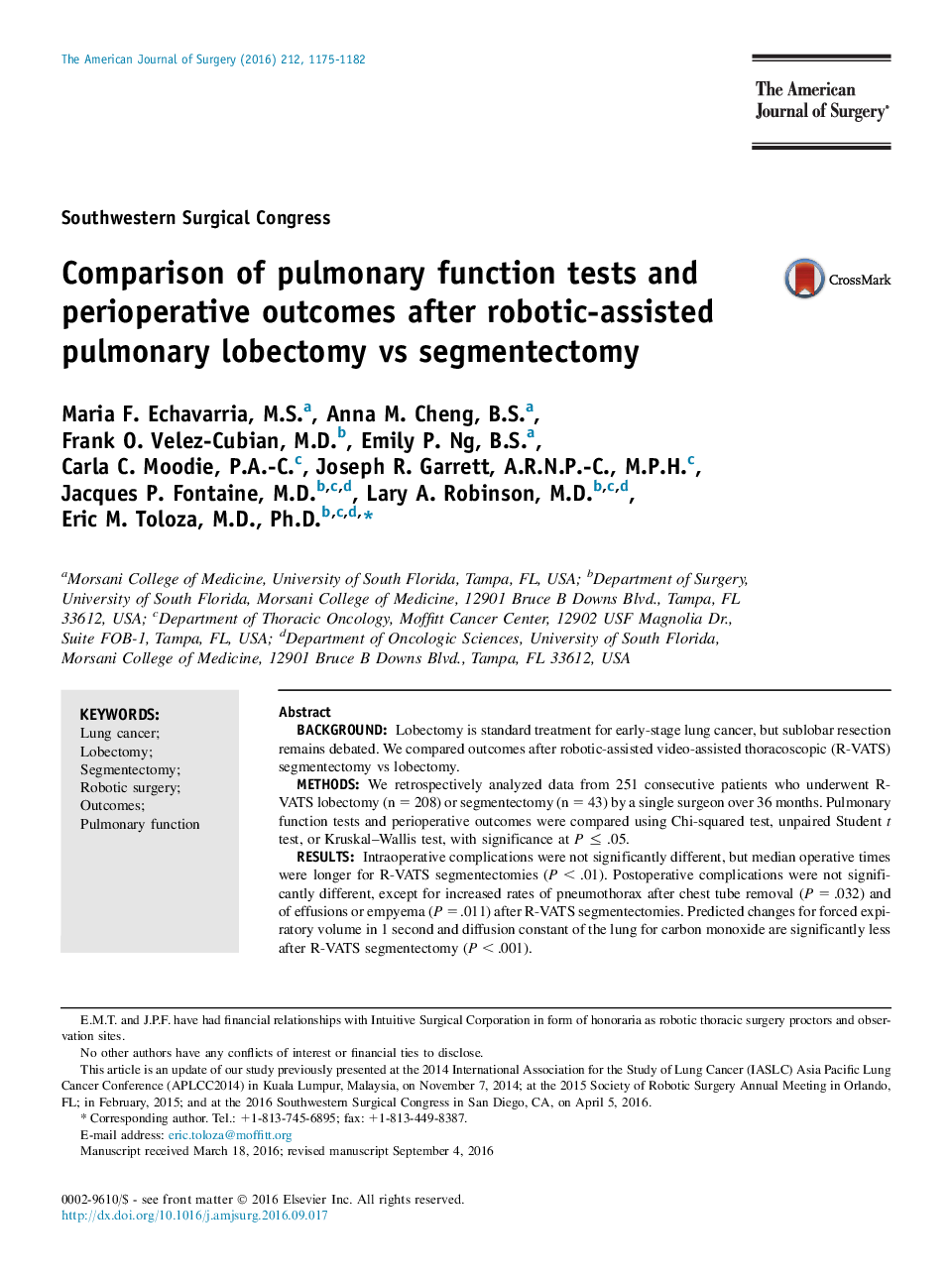| Article ID | Journal | Published Year | Pages | File Type |
|---|---|---|---|---|
| 5731347 | The American Journal of Surgery | 2016 | 8 Pages |
â¢R-VATS segmentectomy significantly preserves more pulmonary function than lobectomy.â¢R-VATS segmentectomy has a higher rate of pulmonary complications than lobectomy.â¢R-VATS segmentectomy is a viable and safe option for lung cancer patients.
BackgroundLobectomy is standard treatment for early-stage lung cancer, but sublobar resection remains debated. We compared outcomes after robotic-assisted video-assisted thoracoscopic (R-VATS) segmentectomy vs lobectomy.MethodsWe retrospectively analyzed data from 251 consecutive patients who underwent R-VATS lobectomy (n = 208) or segmentectomy (n = 43) by a single surgeon over 36 months. Pulmonary function tests and perioperative outcomes were compared using Chi-squared test, unpaired Student t test, or Kruskal-Wallis test, with significance at P ⤠.05.ResultsIntraoperative complications were not significantly different, but median operative times were longer for R-VATS segmentectomies (P < .01). Postoperative complications were not significantly different, except for increased rates of pneumothorax after chest tube removal (P = .032) and of effusions or empyema (P = .011) after R-VATS segmentectomies. Predicted changes for forced expiratory volume in 1 second and diffusion constant of the lung for carbon monoxide are significantly less after R-VATS segmentectomy (P < .001).ConclusionsR-VATS segmentectomy should be considered as an alternative to lobectomy for conserving lung function in respiratory-compromised lung cancer patients, although oncologic efficacy remains undetermined.
